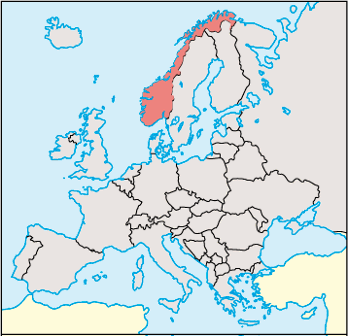What is the Capital of Norway? Oslo

Oslo is Norway’s capital and largest city, and also one of the oldest cities in the country. Oslo also constitutes a municipality and a county and lies at the heart of the Oslo Fjord, with the city center at the heart of the two bays Pipervika and Bjørvika. The town center also includes the area between these coves and the adjacent area just to the north. The city of Oslo (which also includes areas in the neighboring municipalities) has more than one million residents as of 2018.
The administrative unit Oslo comprises the fjord stretch between the Lysakerelva estuary in the west and the mouth of the Gjersjøelva estuary in the south-east and extends northwards all the way to the border with Inland (formerly Oppland) and Viken (formerly Buskerud) far in the Nordmarka. In both east and west, Oslo borders Viken (formerly Akershus). The urban development comprises ⅓ of the municipality’s area, essentially in the low lying areas near the fjord as well as in the Groruddalen valley, which leads northeast to Romerike. The remaining ⅔ of the municipality’s area consists of large, higher forest areas, Nordmarka with Sørkedalen andMaridalen in the north, Lillomarka in the northeast, north of Groruddalen, and Eastmarka in the southeast, south of Groruddalen.
As of 2004, Oslo has been divided into 15 districts with each administration and with district committees appointed by the city council. Sentrum and Marka are outside the district scheme; these are considered as “common areas” for the municipality’s residents. The residents here get their services offered by the nearest district.
Oslo belongs to the Oslo Police District, the Oslo District Court and the Borgarting Court of Appeal.
The municipality of Oslo is comprised of five prostitutes with 38 parishes in The Norwegian Church. The prostitutes are Nordre Aker, Oslo Dom Prosty, Søndre Aker, Vestre Aker and Østre Aker, all of which belong to the diocese of Oslo.
Oslo has its own county council status from 1842; before this belonged to the city of Akershus. From this time, the municipality and the county of Oslo in a geographical sense, and also with respect to the administration, have been synonymous concepts. Oslo has since 1837, when the municipal autonomy was introduced, received several city extensions in Aker, the former surrounding county; the largest extensions were carried out in 1859 and in 1878, before Aker was fully incorporated into the city in 1948. A smaller area, the Tangerud area (252 acres), was transferred from Skedsmo in 1980.
The city of Oslo
The city of Oslo (988,873 residents in 2018) includes the urban built-up areas within the municipal boundaries as well as the adjacent, continuous urban development Oppegård and Ski (even Langhus) (from 2020 Nordre Follo) in the south, Lørenskog, Rælingen and Skedsmo (from 2020 Lillestrøm) (even Lillestrøm and Kjeller) in the east, Nittedal (Gjelleråsen area) in the northeast and Bærum and Asker (even Slemmestad)) in the southwest. The Oslo city region encompasses an even larger area than the physically connected urban area. In 2018, the city of Oslo passed one million residents.
Municipal Weapons
The weapon (approved in 1624) has a man with three arrows, a millstone and a glory seated on a throne with lion-shaped side pieces, under the feet a figure and in the background four stars. The heading “Unanimiter et constanter Oslo” is usually translated “agree and firm, Oslo”. The seal is originally from the 1300s and is available in several versions after that; today’s edition came to fruition for the city anniversary in 1924. The motif reflects the story of St. Hallvard and his death.














































